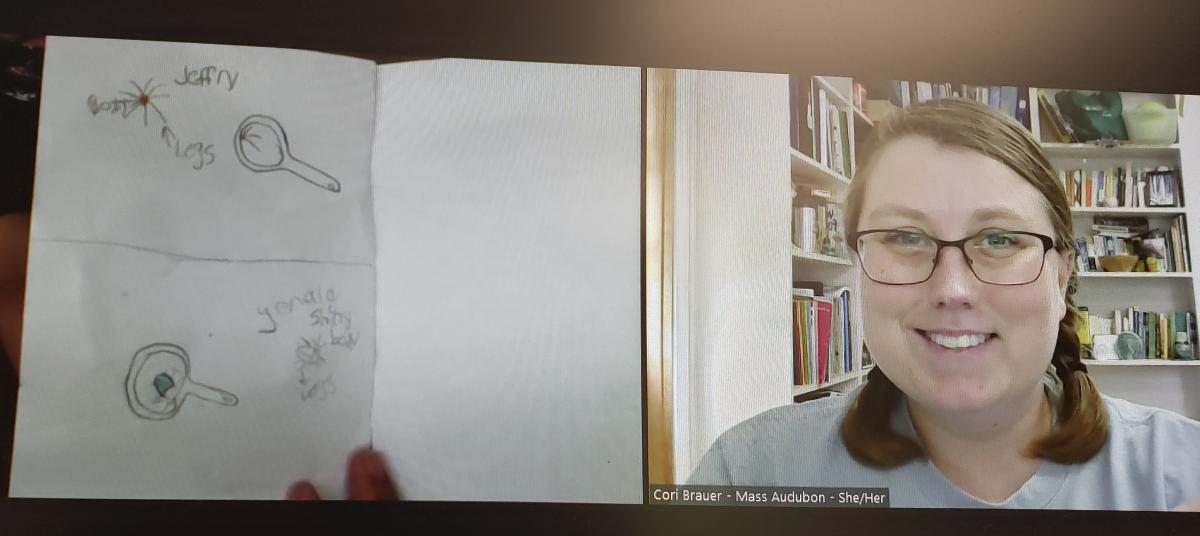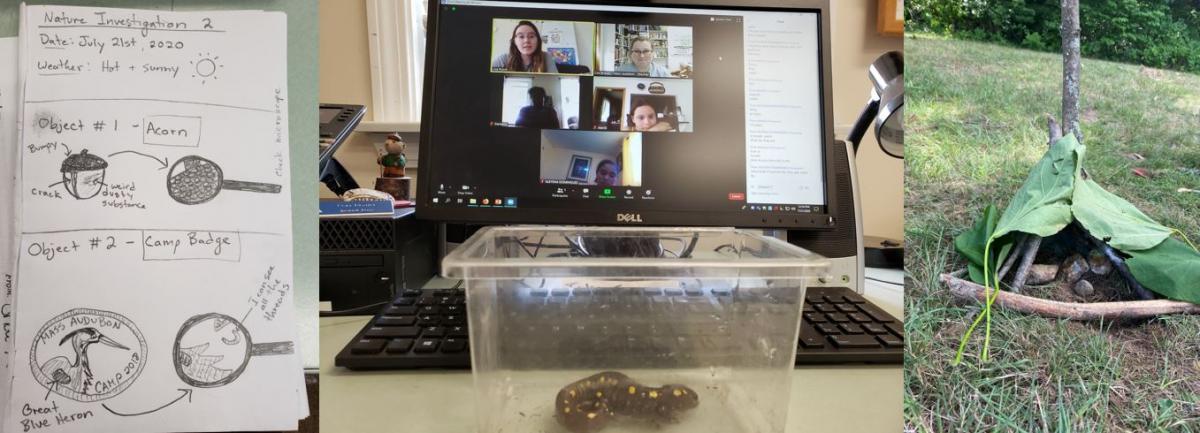Mass Audubon: Place-Based STEM Meets You Where You Are

The NOAA Office of Education and NAAEE partnered to increase environmental and science literacy among NOAA’s partners and external networks. In this five-year partnership supported by the U.S. Department of Education, NOAA and NAAEE worked together to provide enriching after-school watershed-related STEM (science, technology, engineering, and mathematics) projects through NOAA-21st Century Community Learning Centers Watershed STEM Education Partnership grants. These grants supported programming for a total of 100 local 21st Century Community Learning Centers (21st CCLC) sites and their students. The 30 selected projects served 18 states, ranging from Alaska to Florida.
eeBLUE: Watershed Chronicles
This post is written by Cori Brauer, Education Coordinator at Ipswich River Wildlife Sanctuary.
Like many other things right now, our 21st CCLC grant-funded program started this past summer with changes, challenges, and creative thinking about moving forward with meaningful work in difficult times. We were excited and grateful to begin our partnership between Mass Audubon’s Ipswich River Wildlife Sanctuary in Topsfield, Massachusetts, and Lawrence Community Group in Lawrence, Massachusetts. Some of our youths participated in the program entirely virtually from home, while others were in a child-care program at their school, in-person, and with access to the schoolyard. Different settings and logistics meant that our program needed to be focused on the core goals and work from there—getting to know each other and building community, empowering students to feel like scientists, and connecting with nature wherever we may be. Altogether, we had 20 fabulous youths throughout the program, developing science skills, and exploring nature all around us, including in our homes, schools, and neighborhoods.
For four weeks in July and August, Mass Audubon Education Coordinator Cori Brauer used Zoom to connect virtually with students learning from home and with their program leader Lisa Rusch. Additional time was built in for students to explore whatever nature was accessible to them at home. Cori also connected virtually with youths at the Frost School and their program leader Raphael Cartagena. In addition to using Zoom, Cori was projected onto a screen to interact with students who were there together exploring nature in their schoolyard.
We used nature journals for both groups to write and draw about the investigations we did during each class. Investigations were meant to introduce or strengthen the skills needed to do authentic science and our local communities. We practiced using hand lenses to hone our observation skills, tested places where an ice cube might take the longest to melt to practice the steps in an experiment, and shared the plant, animals, and ecological systems we noticed all around us in our homes and schoolyard.

Looking out our windows, we tried to predict upcoming weather from cloud types and built mini-shelters out of natural materials designed to protect us from an approaching thunderstorm. All our topics lead us to more questions and understandings about how these topics affect both the human and non-human elements of the local ecosystems where we live.
Looking ahead this Fall, I know we will have more challenges that will require more creative thinking and flexibility, but this first experience building relationships, setting the stage with science practices, and sharing our curiosity has given us hope about what’s possible wherever we find ourselves in the future. Check out our blog here for updates as we navigate more community-based authentic STEM programming in Massachusetts this year.


